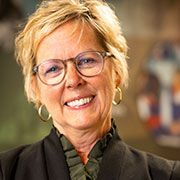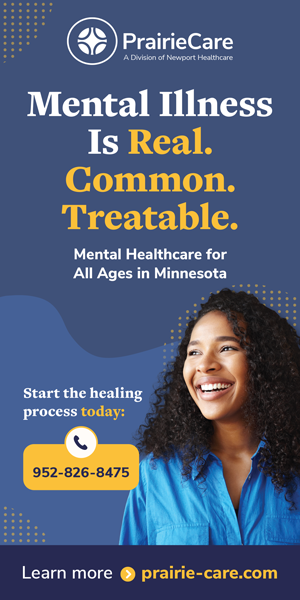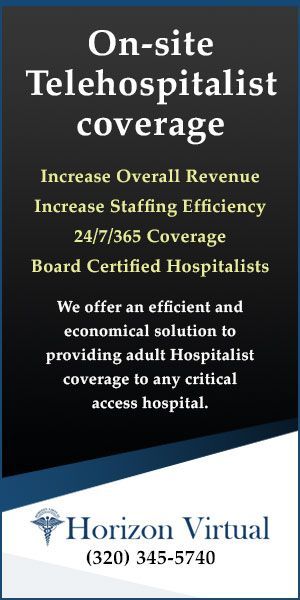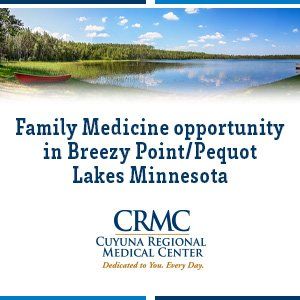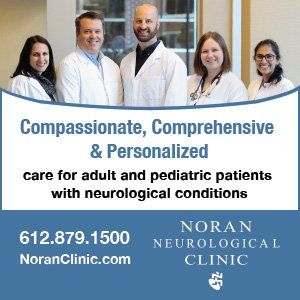Interview
Improving Outcomes for Children and Families
Julie Sjordal, Chief Executive Officer, St. David’s Center for Child & Family Development
Please give us some background on St. David’s, how it started and has grown.
St. David’s Center is a regional leader in child and family development that was founded in 1961 and has evolved from a small yet innovative preschool in Minnetonka into a large, multiservice nonprofit organization. We reach 6,500 children, parents/caregivers and individuals with special needs annually across the Twin Cities metro area, at our Minnetonka and two Minneapolis locations, over 30 partner sites and in more than 2,000 homes.
Our four core service areas are:
- Inclusive Early Childhood Education offering early education and care to 170 children of all abilities annually, ages 16 months to 5, within our accredited, high-quality program.
- Early Intervention and Treatment ensuring that more than 4,400 children at risk of poor developmental outcomes, children with emerging mental health needs and children with developmental delays and disabilities—and their families—gain access to mental health and pediatric therapies, autism treatment and support and infant and early childhood home visiting.
- Community-Based Disability Services serving 230 individuals with special needs with in-home personal support and group-based therapeutic recreation.
- Parent and Professional Training and Consultation annually engaging 1,700 caregivers and community professionals in education and consultation that improves attunement to children in their care.
Please tell us about your approach to providing care.
St. David’s Center’s approach has three distinct features that set us apart in terms of our approach and our commitment to innovating to meet community needs:
- Interdisciplinary: Development in young children is complex and multidimensional. Our team of infant and early childhood mental health and pediatric therapists work collaboratively to understand and treat what is at the root of challenging behavior.
- Two-Generation: Every evidence-based intervention we use is dyadic: focused on the parent-child relationship and generalizing skills across settings.
- Culturally Responsive: For the past ten years, St. David’s Center has provided the only East-African responsive development, play and relationship-based autism treatment program in the country.
What can you share about the range of children and families you serve?
St. David’s Center provides educational, therapeutic and social services for children and families whose life experiences include the impacts of poverty, systemic injustice, isolation, lack of adequate resources and trauma. This trauma often manifests as witnessing or experiencing violence and in some cases, complex trauma rooted in disrupted primary caregiving relationships. We also serve children with developmental, physical, cognitive and emotional delays or disabilities. Our primary focus is on early intervention, as research consistently shows that addressing challenges during the critical developmental years of ages 0 to 8 can mitigate negative impacts and foster resilience. By working with families during these formative years, we lay the groundwork for long-term success and well-being. Six thousand of the 6,500 we serve annually are children 0 to 12 and their parents/caregivers.
We also offer an exceptional inclusive early childhood education program on our campus in Minnetonka, as well as ongoing individual support services and therapeutic recreation to youth and adults with enduring needs, recognizing the inherent isolation and lack of opportunities for social relationships.
Our client base primarily resides in Hennepin County, with 40% from the city of Minneapolis and first ring suburbs, 40% from the west metro, and the remaining 20% from across the county, Carver County, and the east metro. We also serve a substantial and growing immigrant population at both our campuses in Minneapolis. We center our services on populations that have been historically marginalized and underserved in mental health and social services. Through this approach, we aim to advance social and health equity, creating opportunities for every child and family to thrive.
What are some of the recent advances in treating autism?
We are a pioneer in employing the Greenspan Floortime Model, a longstanding, child-centered intervention for autism that emphasizes relationships, emotional engagement and play. Building on the principles of Floortime, this approach incorporates and speaks to a range of newer practices at the forefront of recent advances in treating autism. Informed by the latest research on adverse childhood experiences (ACEs), our programs incorporate trauma-informed practices. This ensures that children with autism, particularly those with co-occurring stress or trauma, receive care in safe, supportive environments that prioritize emotional regulation and resilience.
As part of advances in autism treatment around issues of trauma and its relationship to social equity, we employ inclusive and strength-based models, which shift emphasis from deficits to a child’s unique abilities and potential. By celebrating neurodiversity and creating environments where children of all abilities learn and play together, we foster empathy, connection, leadership and mutual growth among peers.
We center our services on populations that have been historically marginalized
As understanding of differences in sensory processing becomes more widespread, it is important to integrate sensory processing considerations into therapy, addressing the unique sensory experiences of children with autism to enhance emotional regulation and engagement. This attunement aligns with our relationship-based foundation, as sensory processing is essential to helping children feel safe and ready to connect. In addition, outdoor and nature-based therapies remain at the heart of our programming. We believe our environment is the third educator. Increasingly, research highlights the benefits of nature for reducing stress and enhancing sensory and emotional regulation, and our inclusive outdoor spaces and activities encourage exploration, play and connection.
We know children don’t operate in a vacuum and children’s progress is faster and more sustained when parents are involved, as research studies in the past few years have confirmed. We have long featured inclusion and participation of all a child’s caregivers, a key element of the Floortime model.
You serve a wide range of individuals affected by challenges beyond ASD, what can you tell us about these services?
St. David’s Center is committed to supporting children, teens, and young adults facing a wide range of developmental and behavioral health challenges. Our expertise includes treating individuals with conditions such as anxiety, depression, post-traumatic stress disorder (PTSD), attention-deficit/hyperactivity disorder (ADHD), autism spectrum disorder (ASD), selective mutism and challenges with executive functioning or social skills. We also serve individuals with developmental diagnoses such as Down syndrome, cerebral palsy, chromosomal disorders, apraxia of speech and cognitive delays, as well as those requiring augmentative and alternative communication support.
Our comprehensive services are designed to address the diverse needs of clients through integrative, personalized care. For children experiencing early trauma or adverse childhood experiences (ACEs), we provide evidence-based interventions, such as child-parent psychotherapy (CPP) and CPP-informed outpatient mental health services. These programs help children and their families process difficult experiences and build emotional regulation and relational skills. Additionally, our Early Childhood Home Visiting program offers targeted support to families, fostering healthy parent-child relationships and addressing developmental and behavioral concerns in the home environment.
In our pediatric therapy services, we treat children with speech, language, feeding and motor challenges, offering therapies for fluency, phonological disorders and apraxia, alongside interventions for sensory and physical needs. These therapies support children’s communication, motor development and social skills, empowering them to navigate their daily lives with independence. For individuals with enduring disabilities, our community-based services, such as therapeutic recreation and independent living skills programs, provide opportunities to build life skills, confidence and meaningful relationships within a supportive community. Our relationship-based approach ensures that every individual receives care tailored to their unique needs. Guided by a commitment to equity, whole-child and whole-family support, and inclusion, we provide a nurturing environment that addresses developmental and behavioral challenges while empowering individuals to thrive.
What can you tell us about advances in assessment and early diagnosis and why these are so important?
Advances in early diagnosis and assessment of autism have significantly improved outcomes for children by enabling earlier intervention during the critical early developmental periods for cognitive, social and emotional development. At St. David’s Center, we prioritize comprehensive, individualized assessments as early as possible to address a growing need for accurate and accessible diagnostic services, especially in light of the increasing prevalence of autism spectrum disorder (ASD) nationwide and in Minnesota. With ASD now reliably diagnosable as early as 18 months, multidisciplinary approaches like ours can ensure families receive a clear diagnosis and recommendations in a crucial moment of a child’s developmental journey.
Central to our model is the use of validated screening tools, such as the M-CHAT-R/F, and a commitment to reducing barriers to diagnosis. We address common challenges, including disparities in access to care, by offering supportive care coordination and other supports, through culturally responsive services and by actively engaging families in the diagnostic and therapeutic processes. Our comprehensive evaluations identify a wide range of developmental and behavioral concerns, including co-occurring conditions, which sometimes require longer-term observation and assessment, to provide a holistic understanding of each child’s needs.
Early diagnosis is critical, not only for reducing symptoms and improving outcomes for children, but also for supporting family stability and improving long-term developmental outcomes. Research shows that early intervention during the formative years strengthens neural pathways, enhances social and emotional skills and fosters resilience. By prioritizing early identification and offering integrative pathways to support, we are working to ensure that every child has the opportunity to thrive.
Please tell us about your parent-child services.
St. David’s Center’s parent-child home visiting services are designed to support families in building strong, nurturing relationships and fostering healthy child development. Through programs like Sensitive Parenting and Parents as Teachers, we provide evidence-based, relationship-centered support to families during the critical early years of a child’s life.
Healthy Families and Parents as Teachers are evidence-based models grounded in a holistic approach to family support, delivering tools and resources to parents through regular home visits, and focusing on the parent-child relationship. These programs attune to families’ strengths and challenges, offer strategies for enriching the parent-child relationship, help parents learn and nurture their children’s development and connect them to additional resources as needed. The main difference in the models is Healthy Families focuses on first time parents, has a short eligibility window for enrollment, from the third trimester of pregnancy through three months, and extends up to four years.
Sensitive Parenting support intervenes with individuals with severe and persistent mental illness who are parenting children 0 to 5. The model focuses on enhancing the connection between parents and their children, through in-home sessions focused on practicing responsive parenting.
What can you tell us about your Pediatric Therapy clinic?
We provide occupational, speech and feeding therapies through an interdisciplinary, relationship-based approach that prioritizes collaboration across departments to deliver comprehensive care. Our therapists collaborate closely with families and one another to create individualized, play-based treatment plans tailored to each child’s developmental needs. We address challenges such as fine motor delays, sensory integration, communication and feeding difficulties while remaining rooted in supporting social-emotional growth.
Recognizing the barriers many marginalized families face in accessing services, we offer care coordination and culturally responsive supports to ensure equitable access. Together, we strive to empower children and families to achieve meaningful progress and lasting outcomes.
In 2025 you’ll be opening an exciting new facility in downtown Minneapolis. What can you share about this project?
Currently, nearly 2,100 children, primarily 0 to 6, are on our waiting lists for early intervention. This demand-side crisis intersects with an equally impactful supply-side crisis: Not only are we experiencing a well-documented shortage in the mental health workforce, but current staff are also entering the workforce without the depth of clinical knowledge required to align with the complexity and intensity of children’s needs. Compelled by these crises on both the demand and the supply side, and given our financial stability and reputation as an employer and practicum placement of choice, we made a commitment as a board and leadership team to look for opportunities to expand our reach through renovating the 1130 Nicollet Mall building in downtown Minneapolis. This 105,000-square-foot space in an underutilized fitness facility is being transformed into a state-of-the-art assessment, treatment and training center that will enable us to expand our services, increase our workforce and build its capacity to treat complex needs in the young children.
How do you interact with physicians and how could this work be enhanced?
Collaboration with physicians is a vital part of our commitment to coordinated, comprehensive care for children and families at St. David’s Center. For our pediatric therapies, we request physician orders for evaluation and treatment before services begin. Following assessments, we send a detailed evaluation and treatment plan every 90 days for physician review. These documents provide context for care planning, including referrals and caregiver strategies to support daily living activities.
While direct communication between therapists and primary care providers isn’t common, it occurs in specific cases, such as clarifying a diagnosis, addressing medical restrictions or seeking guidance on medication management. Most often, caregivers serve as intermediaries, relaying recommendations back to PCPs. For complex cases, coordinated care with physicians has been critical but inconsistent.
To deepen these relationships, we envision regular case reviews for children with complex needs or during significant changes in status or treatment, fostering a shared understanding of care priorities. Feeding clients, in particular, would benefit from structured communication across specialties like gastroenterology, ENT and allergists. We also recommend formalizing care coordination through stronger communication pathways, such as physician or nurse outreach to case managers when additional services or supports are required.
Reintroducing roundtable discussions with physicians could create opportunities to discuss shared outcomes and align care approaches. Supported by appropriate billing codes for care coordination, these efforts would enhance collaboration and ultimately improve outcomes for children and families.
Julie Sjordal,
is the CEO at St. David’s Center for Child & Family Development.
MORE STORIES IN THIS ISSUE
cover story one
Maps of Healing: Rural Horizons of Tertiary Care
By Fateh Bazerbachi, MD
cover story two
Living with ADHD: Understanding and empowerment







